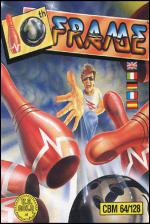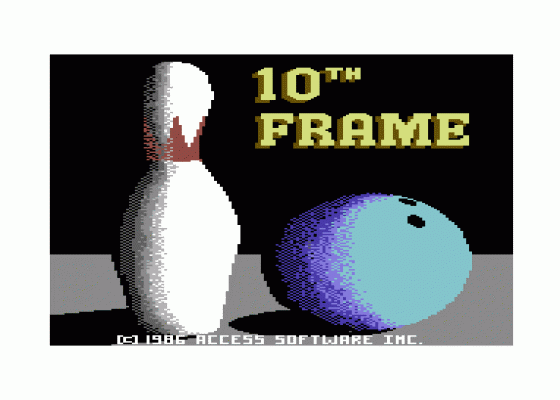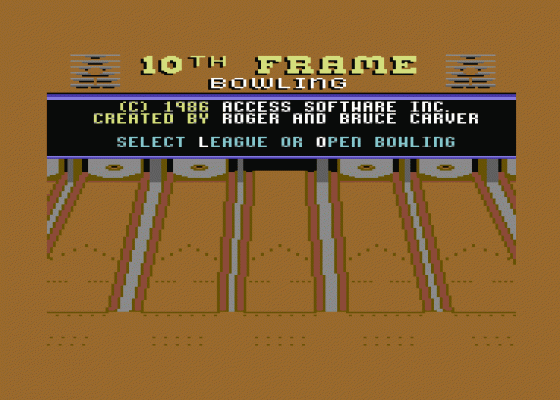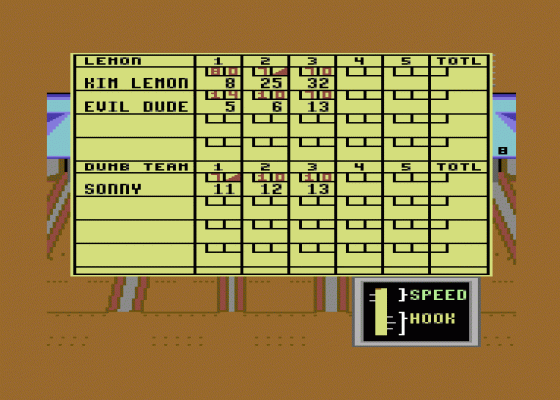
Computer Gamer
 1st March 1987
1st March 1987
Categories: Review: Software
Publisher: U. S. Gold
Machine: Commodore 64
Published in Computer Gamer #24
10th Frame
US Gold are bowled over with the sporting craze of the Sixties, but will it be the computer craze of the Eighties?
When ten-pin bowling madness gripped Britain in the early Sixties, it resulted in companies like Brunswick opening pin palaces all over the country. Here devotees could swap their normal footwear for soft-soled bowling shoes and enter the hallowed halls of the Bowling Alley. Today, many of the Bowls have been converted into Bingo Halls, supermarkets or Snooker Clubs but if Britain follows the American revivalist movement, this trend could be reversed.
Riding along on the crest of the craze comes US Gold's latest import by Access Software, 10th Frame. This professional bowling simulator has many of the skill features of the real game and the sound and animation are incredibly realistic.
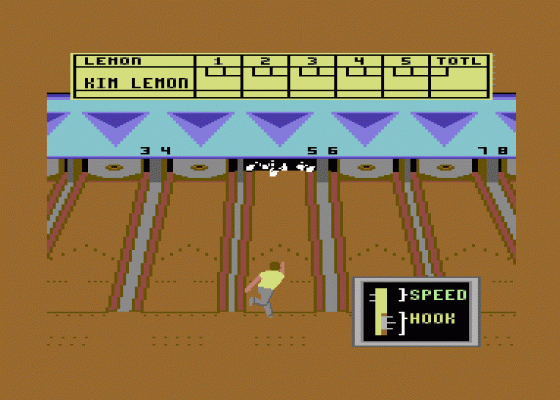
When I was younger I used to hang about the local Bowl as an unofficial freelance scorer. Unsuspecting newcomers to the alleys would hire my services for a drink or, on a good day a free game. This was a profitable phase of many a misspent youth because, although the game was relatively easy to play, the scoring system was wicked. 10th Frame overcomes this problem by automatically keeping score for up to eight individual players or two teams of four.
The screen display shows a row of alleys viewed from the spectators' gallery behind the player, looking towards the automatic pin setters and their corresponding triangle of skittles. Although several lanes are shown, only one is used and I feel that the wasted space could have been better used for displaying the scoresheet.
Each match consists of ten frames (hence the name) and each frame allows the player two balls to demolish the triangle. Successfully scattering all the pins with the first ball is called a strike and using two balls to the same effect is called a spare. These both affect the score according to complex rules governed by the next ball or frame but with automatic scoring these details needn't bother us here.

As your bowler appears, you first of all set the speed and then the amount of hook on the ball. This is done by using thermometer gauges displayed at the side of the screen. As the speed bar increases into the speed zone, you press the fire button. Next, the hook bar starts to increase and is similarly set to create the effect you need for a maximum score. Each factor relates to the other; the greater the speed, the less hook will be achieved. The perfect shot is a medium speed ball which hooks moderately between the 1 and 3 pins to score a strike.
As the player takes his perfectly animated approach, the ball rumbles down the lane and scatters the pins with a realistic clatter. Down comes the automatic pin setter which lights up an indicator board above the lane to show which pins remain standing and the rake sweeps down and back to remove any fallen skittles.
If a strike has been scored, all the pins are reset for the next player. If not, the remaining pins are lowered by the setter ready for the second ball. At this point in the real game your bowl is sent whizzing back along a special shute but this little refinement is missing from the game. It may be a minor point but considering the detail included in the rest of the game it would add to the realism. More importantly, the game would be improved if a third press of the fire button was required to release the ball and some method of joystick waggling was required to time your approach to the foul-line. In an actual game of ten-pin these are crucial factors and just as important as speed and hook.
After each frame, the current player's score sheet is dropped in at the top of the screen and updated. When all the players have bowled, the full sheet is displayed in place of the screen display.
Visually and aurally, the game is superb but the lack of gameplay could make it a little bit tedious after a while unless you're really into ten-pin bowling. Personally, I welcome a new computer sport but I feel that it is more apt for the cheaper Americana label than as a full price game.
Other Reviews Of 10th Frame For The Commodore 64
10th Frame (US Gold)
A review
10th Frame (U. S. Gold)
A review
10th Frame (US Gold)
A review by Bohdan Buciak (Commodore User)

